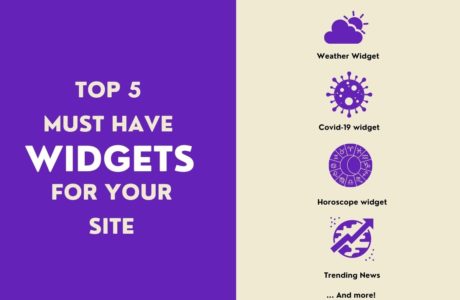To ensure that your content is up to the mark and meets your SEO strategy, you should take care of some major points when your content research, creation and presentation is concerned. Here are a few major Dos and Don’ts for writing good SEO content for your site. Let’s take a look.
Dos for writing articles –
Keywords play a key role: Keyword research should always be the first task when you write an article. Choosing relevant keywords to create understandable and engaging content for the audience is a step that one can’t skip. Whenever a user is searching for an article, they come up with specific keywords that give them the top search results. Hence, using keywords, maintaining decent keyword density (2-3%) and introducing long-tail keywords to build better search query are some of the basic and essential steps. One can use a variety of tools that are available online to find the most relevant keywords and start articulating. Here are a few: Google Keyword Planner, KeywordTool.io, Google Search Console.
Note: Keywords can either make or break your content ranking. An article stuffed with keywords isn’t readable for the users and it also potentially reduces the conversions. Over usage of keywords refer to repetitive content which further result in higher bounce rates.
The title is the essence: Your article title is the first factor that convinces a user to click on the article and give it a read. While writing an article title, try to come up with the best fit that can describe your article in a subtle and appealing way in 60 characters. Yes, your title should be short and sweet because reading too many words in the title would be time-consuming and thus you can lose a user. Along with this, always remember to write your article title with a major keyword that you want to focus on throughout your article. Including keywords in the title is something one should not miss at all.
Structured Data is a priority: Having presentable structured data depending on the type of content you choose to display is a necessity to grab the attention of the readers. Let’s consider an example, your content can be around books, news, movie reviews or anything else. If you want to come up with a movie review for ‘Life of Pie’, using the required keywords, tags, description with the keywords and more.

In the attached screenshot, you can see the meta tags, metadata, title, description, name of actors and several other essential keywords and pointers included in a systematic way.


Here is how impressive and eye-catching the content will look when all the parameters of the structured data are properly taken care of. This ultimately results in more clicks and users on the content.
Focus on description length: Once you have identified your target audience, it is important to come up with a crisp description that can convince the reader to click on the article and give it a read. Writing a description in around 160 characters including the gist of your article with long-tail keywords and action-oriented keywords can be helpful with the google search. Always remember that the article description along with the relevant meta tags is your first impression so take time in building an impressive one.
Create a structured article (Subtopics & Subheadings with keywords): Let’s consider you have two articles in front of you. One of them is 8 paragraphs one after another after the subtitle and the other one consists of subsections, detailed explanation with diagrams and bullet points. It’s clear that people will choose reading the second article as it looks more presentable. Your article should have subtopics with subheadings including focused keywords for better readability and SEO. Images do more than half of the work and keep the reader interested. Always come up with attractive images that represent your content.
Don’ts for writing articles –
Avoid plagiarism, bring up unique content: Plagiarism is a big NO when it comes to content creation. One thing that can harm your SEO drastically is copied content. Getting inspired by a piece of content is something that won’t be a big deal but copying large segments of content is not a good practice. Search engines are smart, they can identify and favour the original source of content and push the duplicate content down when it comes to ranking. Hence, even if you think the topic you are writing about is cliche, let your own creativity flow and blend it with the proper use of keywords.
Say NO to shabby URL’s: A shabby URL structure can be a big bummer even if you come up with great content. Always remember, the more readable URLs one can create, the better it gets for the readers. Along with this, crafting a good page title in terms of SEO is again an art. The title tag is the first thing visible to the users and considered by google for your article topic. Do not include special characters in the URL. Also, when you create a URL, do not include numeric values in between the URL. The best way to create URL is to include the domain name and later include the slug. Let’s consider you are creating a URL for a news website. Here is an example of how your URL should include the domain, slug and category. If you wish to include numerical values, those can be included at the end of the URL.

Keep away from over usage of external links: Using backlinks in your articles and linking them to your keywords to keep the relevant traffic engaged is a general practice and a great thought. However, over usage of external links can look spammy. Over usage of external links can negatively affect the attention of the user while reading. Also, remember that Google penalises unnatural outbound links. Hence, if you choose internal linking in a limited fashion, ensure that you let the link open in a new tab.
Don’t forget the Meta Title and MetaData: Once you have the right set of keywords to be used, it is your job how you creatively come up with a meta title that includes suitable keywords. Writing a subtle meta title is explained by several, but is not often implemented in an apt way by all. Rather than focusing on proper sentence formation, one can come up with an important set of keywords with separators like comma(,) and pipe(|). Talking about metadata, one should take care of small things and gather them together in a specific pattern. Making use of suitable alt tags, snippets, headings using keywords and URLs is essential to come up with suitable metadata for the benefit of your article and site.
Your SEO, content and presentation when combined together, the site and article can get higher ranking on search engines. At the end of the day, attracting users what you work hard for. Hence, take care of all the listed Do’s and Don’ts while you are creating an article for your site. If you need any further assistance, team Readwhere is happy to help you. You can write to us at helpdesk@readwhere.com.




